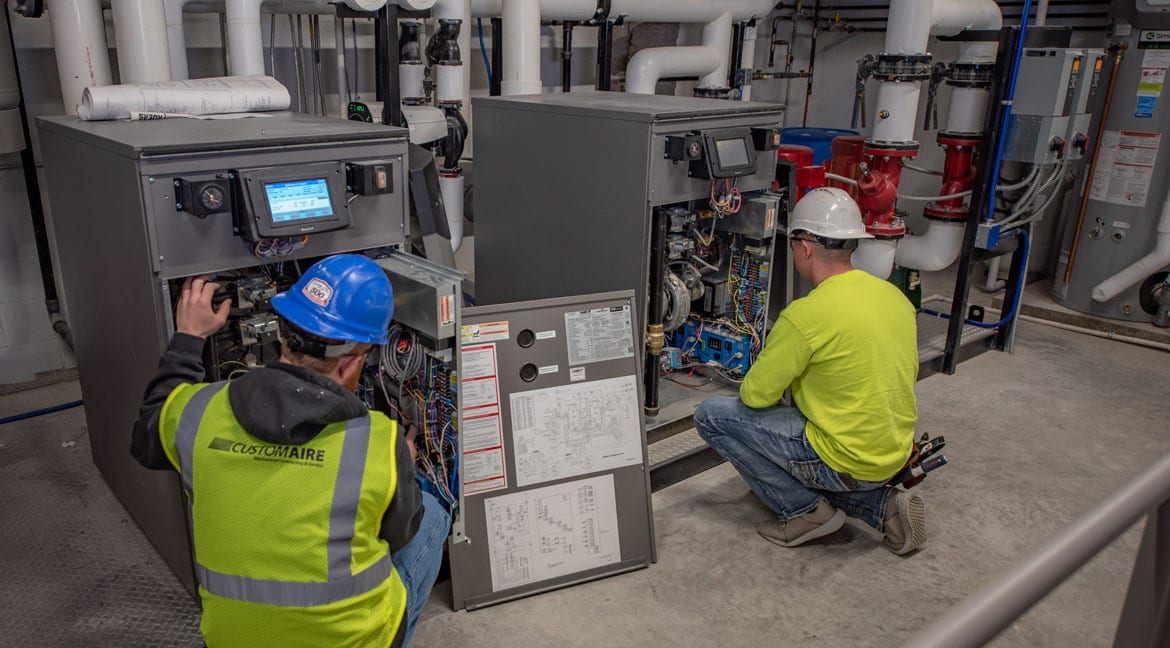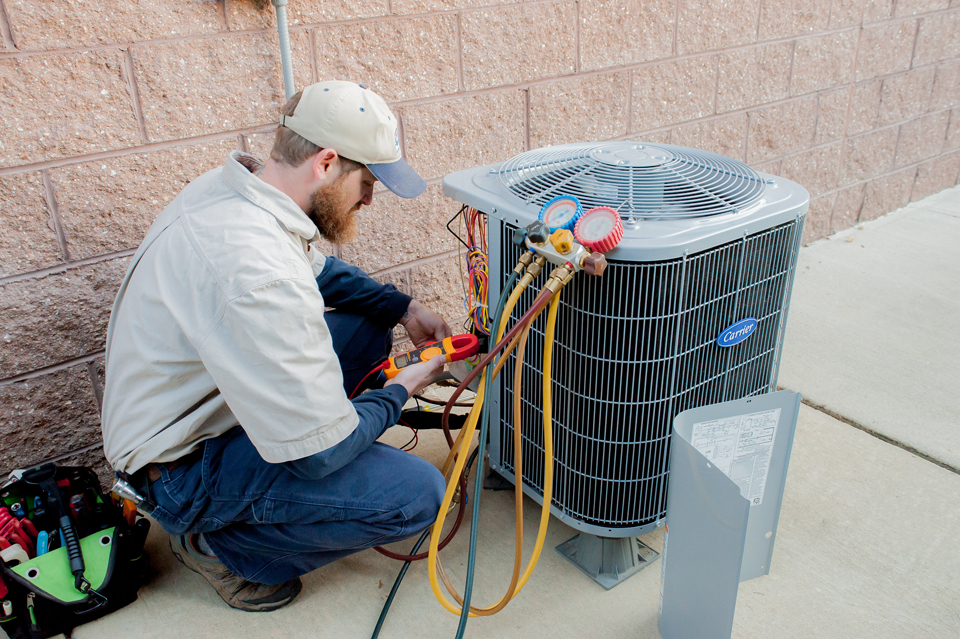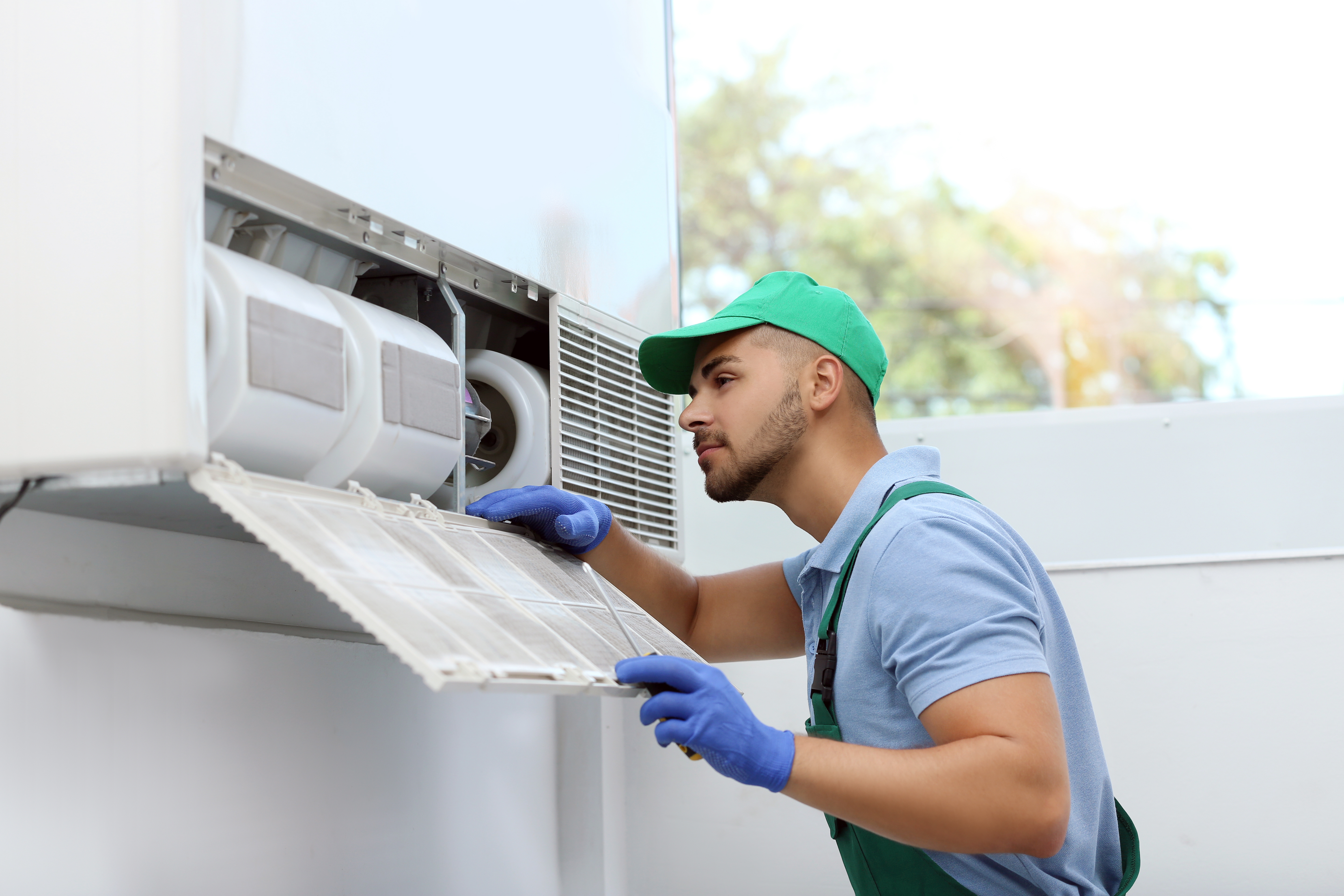Key Factors to Consider Before Your furnace replacement
Key Factors to Consider Before Your furnace replacement
Blog Article
Exactly How a Heat Pump and Heating System Interact to Enhance Your Home's Heating Performance
Recognizing exactly how a heatpump and heater collaborate is essential for house owners looking for reliable home heating services. Each system has its staminas, offering a balanced strategy to home convenience. The warmth pump masters modest temperature levels, while the heating system supplies quick warmth throughout extreme cold. This synergy not only decreases power expenses but likewise improves the lifespan of both home appliances. What factors affect this cooperation, and how can homeowners optimize their benefits?
Comprehending Warm Pumps: Just How They Function
Although lots of people might be not familiar with their inner functions, warm pumps play an important role in modern-day heater. These devices operate by transferring heat from one location to an additional, utilizing the concepts of thermodynamics. In chillier months, a heatpump essences warm from the outside air, ground, or water, and transfers it inside to warm the living space. Conversely, throughout warmer months, it can turn around the procedure, acting as an air conditioner by removing warm from inside to the outside.Heat pumps include an evaporator, compressor, condenser, and growth shutoff. The cooling agent within the system soaks up warmth as it vaporizes at reduced temperatures and stress. The compressor after that raises the stress and temperature of the refrigerant, enabling it to release warm as it condenses. This effective process can greatly reduce energy consumption contrasted to conventional heating techniques, making heatpump a sustainable option for environment control in homes.
The Role of Furnaces in Home Heating
Furnaces play an essential function in home heating by supplying a trustworthy resource of heat during the colder months. They operate by producing warm with combustion or electric resistance, dispersing it throughout the home via ducts or radiant systems. The effectiveness of a furnace is usually gauged by its Annual Gas Use Efficiency (AFUE) ranking, which suggests just how properly the system converts gas right into heat.Furnaces can use different energy resources, consisting of gas, gas, electricity, or oil, enabling homeowners to select the most appropriate option for their requirements. Unlike heatpump, which may struggle in severe cold, heating systems maintain regular efficiency, ensuring that indoor temperature levels continue to be comfortable no matter exterior problems. Furthermore, contemporary heating systems commonly come furnished with advanced innovation, such as smart thermostats and variable-speed blowers, enhancing their performance and responsiveness. This convenience makes heaters a crucial element in all-inclusive home heating methods.

Advantages of Using Both Systems Together
Incorporating the strengths of both heating systems and heat pumps can result in a much more effective and efficient home heating option. Utilizing both systems allows house owners to capitalize on the warmth pump's power effectiveness during milder temperature levels while counting on the heater for more severe cold conditions. This double approach can greatly reduce energy costs, as warm pumps eat much less power than standard home heating methods when temperatures are moderate.Additionally, utilizing both systems together can boost convenience levels in the home. Warm pumps can give constant, also home heating, while heaters can promptly increase ambient temperatures when required. Additionally, the assimilation of both systems can extend the lifespan of equipment by reducing damage on each device, as they share the workload. Eventually, homeowners can appreciate a balanced, affordable heating remedy that readjusts perfectly to varying climate condition, ensuring a warm and welcoming home throughout the winter season.
Just How Warm Pumps and Furnaces Enhance Each Various Other
They develop a complementary heating system that optimizes effectiveness and convenience when property owners integrate heat pumps and furnaces. Warmth pumps operate by transferring warmth from the outdoors air or ground, making them extremely reliable in modest climates. They excel during milder temperature levels, supplying cost-efficient heating. Conversely, furnaces generate warmth with burning or electric resistance, delivering solid, instant heat throughout extreme cool conditions.The mix of these two systems enables for dynamic adjustments based upon temperature level changes. During warmer months or milder wintertime days, the heatpump can take the lead, saving energy and decreasing expenses. As temperatures decline, the heating system can effortlessly engage, guaranteeing consistent heat throughout the home. This harmony not just enhances power use yet likewise improves the life-span of both systems, as each device runs within its excellent performance array. With each other, they create a well balanced environment that adjusts to varying climate needs.
Optimizing Effectiveness: Tips for Homeowners
House owners can enhance their heating performance through several sensible strategies. Establishing a regular maintenance schedule, incorporating smart thermostat innovation, and applying efficient insulation and sealing remedies are essential actions. These actions not only enhance comfort however additionally decrease power prices.
Normal Maintenance Schedule
To guarantee maximum heating performance, developing a normal upkeep timetable is essential for any kind of home. Homeowners should focus on routine evaluations of both heatpump and furnaces to establish peak efficiency. This consists of changing air filters every one to three months, as blocked filters can substantially minimize performance. In addition, organizing specialist upkeep at the very least annually permits service technicians to determine Click This Link and attend to potential concerns prior to they intensify. Homeowners must additionally clean the heatpump's outdoor system to protect against debris build-up that can prevent airflow. By adhering to a routine maintenance schedule, home owners not only boost their furnace' efficiency however also prolong their life expectancy, causing better convenience and minimized power expenses throughout the colder months.
Smart Thermostat Integration
Incorporating a smart thermostat right into a home heating unit can significantly enhance power effectiveness, particularly as it enables precise control over temperature level setups. These tools can learn the home owner's schedule and preferences, immediately changing the temperature level to maximize convenience while decreasing energy usage. For instance, they can reduce home heating during times when the home is empty, minimizing unnecessary intake. Several wise thermostats additionally provide real-time power use information, enabling homeowners to make informed choices concerning their heating behaviors. In addition, remote access using mobile phone apps permits customers to readjust settings from anywhere, guaranteeing the home is warm upon return. Overall, smart thermostat combination not just boosts convenience however significantly adds to power financial savings and effectiveness.
Insulation and Securing Solutions
Smart thermostats play an essential duty in power performance, yet their efficiency can be considerably enhanced by appropriate insulation and sealing options. Home owners need to focus on shielding attics, floorings, and wall surfaces to decrease heat loss. Top quality insulation products, such as spray foam or fiberglass, can substantially boost thermal resistance. Furthermore, securing gaps around air ducts, windows, and doors avoids chilly air seepage and heat getaway. Weatherstripping and caulking are efficient techniques for addressing these leaks - ductless mini splits. Routine inspections for air leaks, together with using blower door tests, can aid identify trouble locations. By buying insulation and securing, home owners can maximize the performance of their home heating systems, inevitably bring about lowered power consumption and reduced energy costs
Typical Misconceptions Concerning Warm Pumps and Furnaces
What mistaken beliefs border warmth pumps and furnaces? Lots of individuals mistakenly think that heatpump are inefficient in colder environments. In truth, modern heatpump are created to run successfully even in low temperature levels, giving dependable heating throughout wintertime. Another common misconception is that heating systems are constantly more effective than heatpump. Nevertheless, this relies on the details power sources and effectiveness ratings of the units concerned. Some may additionally think that utilizing both systems all at once is unnecessary, but actually, this combination can optimize heating performance, particularly throughout extreme climate problems. Additionally, people usually assume that warm pumps call for continuous maintenance, when in reality, they have similar upkeep requires to conventional heater. By disproving these myths, homeowners can make more educated decisions regarding their heating choices, eventually resulting in improved convenience and energy performance in their homes.
Maintenance Factors To Consider for Combined Equipments

Regularly Asked Inquiries
Can Warmth Pumps Work Efficiently in Very Cold Climates?
Warmth pumps can struggle in exceptionally cold climates as a result of decreased efficiency and heat extraction restrictions. Nonetheless, developments in innovation have actually led to versions created for much better efficiency in such conditions, improving their stability in extreme atmospheres.
How Much Time Do Heat Pumps and Furnaces Commonly Last?
Heatpump generally last 15 to two decades, while furnaces have a life expectancy of 15 to thirty years. Regular maintenance can prolong their durability, ensuring efficient procedure and decreasing the requirement for early substitutes.

What Is the Average Cost of Putting Up Both Systems?
The ordinary price of mounting both a heatpump and a heater generally ranges in between $5,000 to $10,000 - heat pump replacement ooltewah tn. Variables affecting this expense consist of system dimension, installment intricacy, and local labor rates
Are There Tax Obligation Rewards for Using Energy-Efficient Heating Systems?
Several home owners ask about tax incentives for energy-efficient heater. Numerous government and state programs usually use refunds or debts, urging the adoption of lasting modern technologies to decrease energy consumption and promote environmental responsibility.
Just how Do I Pick the Right Size Heatpump and Heater?
Choosing the best size warmth pump and read more furnace entails determining the home's square video footage, taking index into consideration insulation quality, and assessing regional environment. Consulting an expert can ensure excellent system efficiency and energy effectiveness based upon particular needs. heat pump installation ooltewah tn. Understanding exactly how a warm pump and furnace work together is necessary for homeowners looking for effective home heating solutions. In chillier months, a heat pump extracts warm from the outside air, ground, or water, and transfers it inside your home to warm the living area. When house owners incorporate warm pumps and heating systems, they develop a complementary heating system that makes the most of performance and comfort. Warmth pumps operate by transferring heat from the outdoors air or ground, making them extremely reliable in modest environments. Warmth pumps can battle in very chilly climates due to lowered performance and heat extraction constraints
Report this page